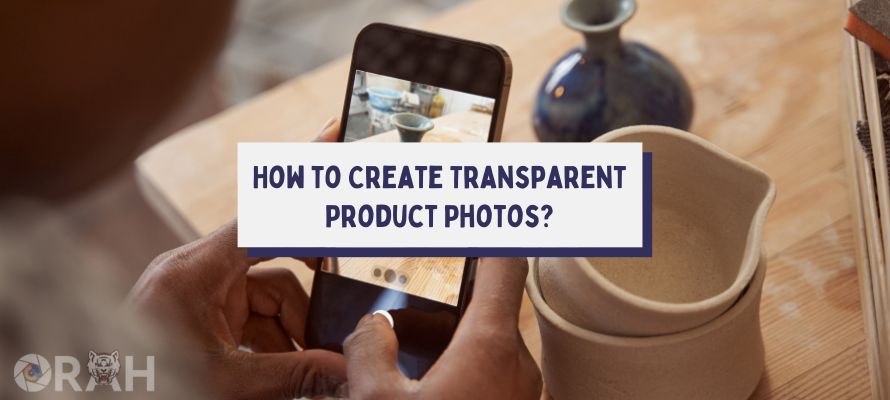
In today’s visually driven world, creating compelling product images is essential for grabbing customers’ attention and driving sales.
One powerful technique that can elevate your product photography is the creation of transparent images.
These eye-catching visuals remove the background clutter, allowing your product to take center stage against a clean, seamless backdrop.
This comprehensive guide will equip you with the knowledge and skills necessary to master the art of creating transparent images for product photography.
From understanding the fundamentals to advanced techniques, you’ll learn step-by-step processes, photo editing tips, and practical strategies to showcase your products in the most stunning and impactful way possible.
Whether you’re an e-commerce business owner, photographer, or marketer, this guide will transform your visual marketing game.
What Are Transparent Images?
Have you ever noticed those eye-catching product images on e-commerce websites or marketing materials where the product appears to be floating against a pure white background?
Those are known as transparent images, and they’re a game-changer in the world of product photography.
A transparent image is an image that has a background removed, leaving only the subject or product visible.
This technique creates a clean, professional look and allows the product to stand out, making it easier for customers to focus on the item you’re selling.
Why Use Transparent Images?
Whether you’re a business owner wanting to post your product’s images on social media for restaurant marketing or whatever type of business you own, transparent images are essential for various reasons:
Attention-grabbing: By removing the background clutter, transparent images draw the viewer’s attention directly to the product, making it the star of the show.
Versatility: Transparent images can be easily integrated into different backgrounds, whether it’s a solid color, a gradient, or a complex scene. This flexibility allows for endless creative possibilities in product presentation and marketing materials.
Professional Look: Transparent images convey a polished, high-quality aesthetic that can elevate the perceived value of your product and brand.
Easy Editing: Without a background to worry about, editing and manipulating transparent images becomes much simpler, allowing for quick adjustments and modifications as needed.
The Process of Creating Transparent Images
Now that you understand the importance of transparent images let’s dive into the process of creating them.
Step 1: Shoot Your Product
Start by capturing high-quality images of your product against a solid-colored background, preferably white or a neutral tone. Ensure that the lighting is even and consistent to minimize shadows and reflections.
Step 2: Use Photo Editing Software
While there are various photo editing software options available, you can find outstanding subscription-based tools that are popular choices for creating transparent images. However, if you’re on a budget, there are also free alternatives that can get the job done.
Step 3: Remove the Background
Once you’ve opened your image using the photo editing software, it’s time to remove the background. Most photo editing programs offer tools specifically designed for this purpose, such as the ‘Background Eraser’ or ‘Magic Wand’ tools.
Carefully trace around the edges of your product, removing the background while preserving the details of your product. This process may require some patience and precision, especially for intricate shapes or fine details.
Step 4: Refine the Edges
After removing the background, you may notice some jagged or uneven edges around your product. Use the ‘Refine Edge’ tool or similar functions to smooth out these edges and create a seamless transition between your product and the transparent background.
Step 5: Save as a Transparent File
Finally, save your image in a file format that supports transparency, such as PNG or GIF. These formats will preserve the transparent background, allowing you to easily integrate your product image into various design elements or marketing materials.
Advanced Techniques for Transparent Images
While the basic process of creating transparent images is straightforward, there are some advanced techniques that can take your product photography to the next level.
Lighting and Shadows
Proper lighting is crucial for creating stunning transparent images. Experiment with different lighting setups, such as using a lightbox or employing multiple light sources, to achieve the desired highlights and shadows on your product.

Additionally, consider adding subtle shadows beneath your product to create a sense of depth and dimensionality, enhancing the overall realism of the image.
Reflections and Refractions
If your product has reflective or transparent surfaces, such as glass or metal, you may need to take additional steps to capture and preserve these effects accurately.
Techniques like using a polarizing filter or adjusting the angle of your product can help minimize unwanted reflections, while careful editing and layering can help recreate realistic refraction effects.
Compositing and Mockups
One of the greatest advantages of transparent images is the ability to seamlessly integrate them into various backgrounds or mockups.
This technique, known as compositing, allows you to showcase your product in realistic settings or create eye-catching marketing materials.
By combining your transparent product image with stock photos, illustrations, or 3D renderings, you can create compelling visuals that captivate your audience and effectively showcase your product’s features and benefits.
Conclusion
Creating transparent images for product photography is a powerful technique that can elevate your brand’s visual identity and effectively showcase your products.
With patience, attention to detail, and the right photo editing skills, you can produce stunning, attention-grabbing images that leave a lasting impression on your customers.
Remember, a well-executed transparent image can be the difference between a product that blends in and one that truly stands out.